
Europe and Mediterranean: Mediterranean with Greek Isles Cruise
Disney Cruise Line
Set sail on a classic voyage that departs from Civitavecchia to breathtaking ports in the Mediterranean. Experience charming beaches, landscaped gardens and inviting taverns in Greece. You'll also have fun-filled days at sea to delight in freshwater pools, Broadway-style shows, Character encounters, themed dining and more.

Executive Member Benefit
Executive Members receive an annual 2% Reward, up to $1,250, on qualified Costco Travel purchases
Digital Costco Shop Card
Member Exclusive: Digital Costco Shop Card, courtesy of Costco Travel, with every Disney Cruise Line sailing†
Sailing Itinerary

Note: Cruise itineraries are subject to change. Please verify ports and times directly with the cruise line.
Overview
Located about 80 kilometers northwest of Rome, the Port of Civitavecchia is the port of Rome and a busy ferry and cargo port serving Italy and southern Europe. Lying on Italy’s eastern shores on the Tyrrhenian Sea, the Port of Civitavecchia has excellent direct connections to Rome. It is an important cruise and ferry port with regular passage to Sardinia, Malta, Sicily, Tunis, and Barcelona. Fishing is of secondary importance to the Port of Civitavecchia. In addition to ocean-going traffic, the Port of Civitavecchia also contains a thermoelectric center and metallurgical works. In 2006, over 51 thousand people called the Port of Civitavecchia home. The Port of Civitavecchia was built on an earlier Etruscan settlement. Emperor Trajan founded the Port of Civitavecchia in the early 2nd Century, calling it Centumcellae. Today, Trajan’s Port is preserved within today’s Port of Civitavecchia. A busy growing town during the late Roman era, the Port of Civitavecchia was attacked by Vandals and then destroyed by the Saracens in 828 AD. Residents escaped to the nearby Allumiere Mountains where Pope Leo IV built a walled town in 854. Eventually, the people returned to Civitavecchia (the name means “old city”). At the end of the 15th Century, the Port of Civitavecchia was under frequent attack by pirates. The naval arsenal was constructed in 1508. Pope Paul III commissioned the building of the keep, which was designed by Donato Bramante and then finished by Michelangelo in 1537, to protect the Port of Civitavecchia from pirate attacks. In 1696, Civitavecchia became a free port under Pope Innocent XII. Because it was Rome’s main port, the French occupied the Port of Civitavecchia in 1849. The Port of Civitavecchia was linked to Rome by the Rome and Civitavecchia Rail Road in 1859. When the Port of Civitavecchia became part of the Kingdom of Italy in 1870, it was one of the Papal State’s most strongly fortified towns when Papal troops welcomed General Nino Bixio on behalf of the Italian unification forces into the Port of Civitavecchia fortress. World War II brought destruction to as much as three-quarters of the Port of Civitavecchia. Reconstruction enlarged the Port of Civitavecchia beyond its pre-war area. The Authority Portuale Civitavecchia (Port of Rome) is responsible for managing and operating the Port of Civitavecchia as well as the ports of Fiumicino and Gaeta. The modern Port of Civitavecchia is at the center of rail, road, and air networks that link it with central Italy and the world. The Port of Civitavecchia can handle about 11 million tons of cargo per year and over 1.5 million passengers. Cargoes include forest products, cereals, iron and steel, chemicals, automobiles, containers, and liquid bulk. In 2007, the Port of Civitavecchia welcomed 856 cruise vessels carrying 1.6 million passengers, and the total number of passengers using ferries and cruise vessels was 3.8 million. In 2007, the Port of Civitavecchia handled a total of 7.7 million tons of cargo. This total included 1.5 million tons of liquid bulk, 1.7 million tons of solid bulk, 4.6 million tons of packages, and 31.1 thousand TEUs of containerized cargo. The Port of Civitavecchia contains 28 berths of a total of 5.6 thousand meters in length alongside depths from 6 to 18 meters. Port properties include five warehouses containing 36 thousand square meters for handling and storing cargo. The intermodal terminal includes seven thousand square meters of storage space and 12.5 thousand square meters for loading/unloading rail cars and parking. The Port of Civitavecchia is one of the busiest ferry ports in the world. Just 80 kilometers northwest of Rome, it is the main tourist destination for people traveling to the Eternal City. It is also a central port for ferries carrying passengers to more local destinations. The ferry terminal offers a complete line of amenities. Different ferry companies offer services to various destinations. Moby Lines handles crossings to Olbia, Sardinia. Corsica Sardinia Ferries runs services to Golfo Aranci. Grimaldi Ferries carries passengers to Barcelona and Tunis, and Grand Navi Veloci operates a route to Tunis. Ferrovie dello Stato operates a combined rail-ferry service to Golfo Aranci.
Overview
This is the largest and most important town of western Crete, with a population of over 60,000 inhabitants. It is situated on the eastern shore of the bay of Chania and is built on the neck of the peninsula, on the site of ancient Kydonia. Chania has, to a large degree, retained its local color. It is one of the loveliest towns in Greece and the many vestiges of its past give it a particular charm. Entire Venetian, Turkish, and Jewish neighborhoods still survive, with well-preserved buildings, while the modern town, continuing to develop, is built according to well-designed plans, with parks and attractive edifices. It differs considerably from the tasteless big towns of today. Chania disposes of a large number of beds in hotels of various categories. There are also pensions and guest houses. There are many restaurants - some of them offering foreign specialties - tavernas, seafood restaurants, "ouzeries", pastry shops, coffee shops, pubs, etc. in every neighborhood and especially in the harbor area, which is lit up by the shop lights in the evenings and sparkles like a fairy-tale town.
Overview
Mykonos is world-famous. It is no coincidence that this, the most cosmopolitan of all Greek islands, attracts so many visitors from all over the globe, including large numbers of artists and intellectuals. Here, the steep mountains to be encountered in most of the Cyclades give way to low, rocky hills which combine with superb beaches to make up the landscape of the island. The capital, Hora (Chora), with its colourful harbour in which little fishingboats nestle happily side by side with luxury yachts, presents quite a different picture from the majority of Aegean island towns. While it is usual for island villages to be built on naturally amphitheatrical sites, Mykonos is spread out over a flat area and conveys an impression of lid aesthetic cohesion. Along the whitewashed streets stand brilliant white box-shaped houses with stepped walls for sitting on, wooden doors and windows and brightly-coloured balconies. These are interspersed with small but impressive churches, pretty little tavernas and shops selling souvenirs and other goods, and the overall sense is of being inside a film set. On the low Kastro hill is the complex of churches known collectively as Our Lady 'Paraportiani', a superb arrangement of whitewashed masses created over the centuries and now recognised as a national cultural monument. Of particular historical and aesthetic interest are the medieval houses in this district of the town, which stand like a wall above the sea protecting the west side of Hora. The Archaeological Museum of Hora contains finds from tombs on the nearby island of Rhenia, sculptures, vases and figurines. The Folklore Museum brings together a number of collections of furniture, icons, pieces of sculpture and folk musical instruments. Mykonos is also the home of the Nautical Museum of the Aegean, which has interest all of its own. The countryside of Mykonos is a mixture of grey-green rocks ringed by prickly pear plants and little fertile areas carpeted with wild flowers. Here and there are tiny whitewashed chapels and windmills. Ano Mera is, after Hora, the most important of the older villages on the island. Standing 8 km. to the east of the town, Ano Mera has the interesting monastery of Our Lady Tourliani, ornamented with fine wood-carvings. The church has a collection of valuable ecclesiastical vessels, vestments and embroideries. The courtyard contains an interesting bell-tower and a marble fountain. Here lovers of the sea will find outstanding golden beaches such as Agios Stefanos, Psarou, Kalafatis, Platis Gialos, Ornos, Elia and Panormos. Miykonos is a busy island with all the amenities of a modern resort and with plenty to do - by day or night for those who want to have a lively time. Yet visitors fond of more peaceful holidays will still find quiet corners in which to relax.
Overview
Dubrovnik - the city of a unique political and cultural history (the Dubrovnik Republic, the Statute from 1272), of world-famous cultural heritage and beauty (inscribed on the List of World Heritage Sites by Unesco) - is one of the most attractive and famous cities of the Mediterranean. Apart from its outstanding natural beauties and well-preserved cultural and historical heritage, Dubrovnik also offers high-quality visitor opportunities. It is also the city of hotels, high ecological standards, and tourist programs, and is equally attractive in all seasons. Its geographical isolation is compensated by high traffic and communication standards - especially through air traffic and fast hydrofoil boats. The tourist development of Dubrovnik started before the First World War; quite soon, the exclusiveness of its attractions made Dubrovnik a powerful international tourist center. The sightseeing of Dubrovnik and its monuments requires several days. However, already a walk through Stradun, through narrow streets and small squares, monumental ramparts and fortresses, provides enough opportunities to experience the millennial beauty of its shell-shaped urban core, centuries of building, stone-cutting, carving and engraving, the history of the Duke's Palace, libraries, the oldest pharmacy in the south of Europe, etc. Dubrovnik offers individual choice among numerous museums and galleries, which contain the jewels of Croatian heritage. The Dubrovnik Museum in the Duke's Palace keeps 15,500 exhibits in its cultural and historical department. A collection of furniture from the 17th-19th century, uniforms of dukes and councilors, aristocratic garments, and many other items are exhibited in the authentic halls of the palace. The Maritime Museum (situated in the fortress Sveti Ivan) has several exhibits on permanent display, related to the maritime affairs of Dubrovnik and Croatia on the whole, with a particular emphasis on the history of the Dubrovnik Republic. The museum of the Franciscan monastery keeps all inventories of the old pharmacy, as well as the works of Dubrovnik jewelers, painters, and embroiders. The Museum of the Dominican Monastery exhibits valuable examples of Dubrovnik paintings from the 15th and 16th centuries, as well as sculptures, jewelry, manuscripts, incunabula, and notes (music). The treasury of the Dubrovnik cathedral keeps the relics of St. Blaise, patron of Dubrovnik, and numerous paintings and works of art. The Rupe Ethnographical Museum presents traditional occupations and the rural architecture of the region of Dubrovnik, national costumes, and hand-made textiles. Very attractive is also the Aquarium of the Institute of Biology, situated in the fortress Sveti Ivan, comprising interesting marine species. Dubrovnik has several churches, monasteries, and hotels scattered all over the town. Its coastal belt is adorned with several marinas, piers, and promenades. Because of the magnificent view of the medieval Dubrovnik, a walk along the town ramparts is a must for each visitor. A great number of Dubrovnik restaurants and taverns offer delicious specialties of local and international cuisine. Sports and recreational facilities include playgrounds, courts, and requisites for all sports in the sea and on the ground, from tennis and table tennis to sailing and yachting. There are also several gyms and fitness centers with swimming pools, saunas, massage, aerobics, solarium, box gyms, etc. Dubrovnik is famous for quality hotels. Most of them are situated on the Lapad peninsula and in the area of Ploce, southeast of the old town. The hotel complex Dubrava - --Babin Kuk on Lapad has all the features of a small town. It has a shopping center, a bank, an outpatient department, many restaurants and cafés, and a street called the "New Stradun", which connects all hotels. Dubrovnik is the city of an outstanding cultural and artistic life. The most important event in the cultural life of the city is the Dubrovnik Summer Festival (10th of July - 25th of August), traditionally held since 1950. It is a theatre and classical and folk music festival since 1956 included in the calendar of world festivals and as such one of the most famous cultural events in the world. Concerts and other performances take place on open stages in the town (Gunduliceva Poljana, Drziceva Poljana, Lovrijenac, Revelin)or in beautiful interiors of the most famous buildings (Duke's Palace, cloisters, and churches). The repertoire includes works of Croatian and world classics, performed by the leading personalities from Croatia and abroad, including several world-famous actors, directors, conductors, etc. So far several hundred of them have performed in Dubrovnik. An important part of the Festival is his performances of local (Lindo, Lado) and foreign folk music ensembles. The artistic life of Dubrovnik is characterized by numerous exhibitions taking place throughout the year. Apart from already renowned galleries - the Art Gallery (Put Frana Supila 23), its exhibition space Luza Art Centre (Stradun), Sebastian - occasional and permanent exhibitions are also held in other spaces as well. Very famous are also Dubrovnik carnival festivities - so-called Dubrovnik "karnevo" (local variant of the word "carnival"), held ever since the early Middle Ages, when they were brought from neighboring Italy. Another important event is the Feast Day of St. Blaise, also the Day of Dubrovnik (3rd of February). The feast takes place for the whole week, including religious ceremonies, a procession through the town, concerts, sports events, entertainment, and carnival programs. Excursions to Dubrovnik during that week are regularly organized.
Overview
Corfu Town (Kerkyra) is a principal port and the largest town in the Ionian islands. It is built between two Venetian castles, having its unique atmosphere. It is a thriving mass of shops and businesses, set amongst a captivating and charming assortment of elegant buildings, churches, imposing fortresses, and narrow alleyways leading to hidden squares. The tall buildings with the 'volta' (arches), the 'cantina' (narrow flagstoned streets), and the 'meralgia' (sea walls) are showing all a clear Italian influence. One of the most beautiful walks in the town is around the Esplanade (Spianada square), one of the biggest squares in Europe which is the hub of the Corfiot's life. Here you can walk around or sit in one of the many cafe bars underneath the arches of the 'Liston', a name probably derived from a similar promenade in Venice. Liston was built during the imperial French occupation and is reminiscent of the larger 'Arcades' of the Rue de Rivoli in Paris. On the upper side of the Esplanade stands a memorial to the British Lord High Commissioner Sir Thomas Maitland, built in 1816 in the shape of a circular building with Ionian columns. The Corfiots called this building 'sterna' (cistern) because this was where the entrance to the largest underground cistern of the town was to be found. Near the Maitland's monument, in front of the building where the Ionian Academy was housed, stands the statue of John Capodistrias, the first President of Greece. It is a work from the end of the 19th century showing the Governor standing deep in thought. Opposite the Liston is the Old Fortress and 'Anthonas', the Municipal Gardens. In the gardens is the statue of Lord Guilford, showing the founder of the Ionian Academy in his academic robes holding an open book. Nearby are the busts of two famous Corfiots, the poet Lorenzo Mavilis and the writer Dinos Theotokis. At the northern end of the Esplanade stands the Palace of St. Michael and St. George, one of the most elegant buildings in Corfu. Opposite the west front of the palace is a beautiful building that now houses the Reading Society of Corfu, the oldest cultural institute in modern Greece, founded in 1836. The Reading Society contains a unique library of Greek and foreign books as well as a large collection of manuscripts, newspapers, periodicals, paintings, maps and engravings mostly related to the Ionian islands. As one's gaze leaves the Esplanade, after lingering on the palace, it embraces a magnificent view towards the coastal road (Arseniou Street) with its sea walls Following along this road will take you to the Old Harbour of Corfu and the other Venetian castle, the one called the New Fortress. Along this road, the narrow lanes ('cantounia') lead to the Campielo, the oldest quarter of the town. Here the visitor can find the oldest houses and many of the historic churches in Corfu. At the northern end of Capodistria Street stands the Capodistria Mansion, an excellent example of neo-classical architecture. It was built in 1835 by the Corfiot architect John Chronis and is considered one of the most beautiful buildings in Greece. Here John Capodistrias, the first President of Greece, was born. Another notable landmark in the old town is the central market. The most interesting street here is Nickiforou Theotoki as the rows upon rows of 'volta' standing on their stone columns and the tall buildings form one of the most characteristic aspects of Corfu Town. In a little square on Nickiforou Theotoki Street stands the building of the Ionian Bank, which was built in 1846 displaying a well-proportioned facade with finely detailed Ionian pilasters and pediment. On the first floor of the building,g the Paper Money Museum is housed. At the far end of the square is the Church of St. Spyridon. It shelters the body of St. Spyridon, the patron saint of Corfu and one of the great Saints of Greek Orthodoxy, and draws a constant stream of pilgrims from all over Greece every year. On the Evgeniou Voulgareos Street stands the crenellated belfry of the Roman Catholic Church of the Annunciation a venerable building from the end of the 14th century. The whole building was destroyed in the World War II bombing, and the only remains are the belfry, two inscriptions, and a bas-relief representing war trophies. Between Evgeniou Voulgareos Street and a modern square stands the most elegant of the Venetian buildings in Corfu, the Town Hall in baroque style. At the end of Moustoxydi Street stands another building of the period of British rule, the historic Ionian Parliament. At the junction of the Garitsa coastal road and Alexandras Avenue stands the Douglas Obelisk, which also belongs to the same period, erected in honor of the Lord High Commissioner Sir Howard Douglas, to whom Corfu owes a lot of public works and philanthropic institutions.
Overview
Malta is an archipelago in the central Mediterranean between Sicily and the North African coast. It's a nation known for historic sites related to a succession of rulers including the Romans, Moors, Knights of Saint John, French and British. It has numerous fortresses, megalithic temples and the Hal Saflieni Hypogeum, a subterranean complex of halls and burial chambers dating to circa 4000 B.C.
Overview
Malta is an archipelago in the central Mediterranean between Sicily and the North African coast. It's a nation known for historic sites related to a succession of rulers including the Romans, Moors, Knights of Saint John, French and British. It has numerous fortresses, megalithic temples and the Hal Saflieni Hypogeum, a subterranean complex of halls and burial chambers dating to circa 4000 B.C.
Overview
Located about 80 kilometers northwest of Rome, the Port of Civitavecchia is the port of Rome and a busy ferry and cargo port serving Italy and southern Europe. Lying on Italy’s eastern shores on the Tyrrhenian Sea, the Port of Civitavecchia has excellent direct connections to Rome. It is an important cruise and ferry port with regular passage to Sardinia, Malta, Sicily, Tunis, and Barcelona. Fishing is of secondary importance to the Port of Civitavecchia. In addition to ocean-going traffic, the Port of Civitavecchia also contains a thermoelectric center and metallurgical works. In 2006, over 51 thousand people called the Port of Civitavecchia home. The Port of Civitavecchia was built on an earlier Etruscan settlement. Emperor Trajan founded the Port of Civitavecchia in the early 2nd Century, calling it Centumcellae. Today, Trajan’s Port is preserved within today’s Port of Civitavecchia. A busy growing town during the late Roman era, the Port of Civitavecchia was attacked by Vandals and then destroyed by the Saracens in 828 AD. Residents escaped to the nearby Allumiere Mountains where Pope Leo IV built a walled town in 854. Eventually, the people returned to Civitavecchia (the name means “old city”). At the end of the 15th Century, the Port of Civitavecchia was under frequent attack by pirates. The naval arsenal was constructed in 1508. Pope Paul III commissioned the building of the keep, which was designed by Donato Bramante and then finished by Michelangelo in 1537, to protect the Port of Civitavecchia from pirate attacks. In 1696, Civitavecchia became a free port under Pope Innocent XII. Because it was Rome’s main port, the French occupied the Port of Civitavecchia in 1849. The Port of Civitavecchia was linked to Rome by the Rome and Civitavecchia Rail Road in 1859. When the Port of Civitavecchia became part of the Kingdom of Italy in 1870, it was one of the Papal State’s most strongly fortified towns when Papal troops welcomed General Nino Bixio on behalf of the Italian unification forces into the Port of Civitavecchia fortress. World War II brought destruction to as much as three-quarters of the Port of Civitavecchia. Reconstruction enlarged the Port of Civitavecchia beyond its pre-war area. The Authority Portuale Civitavecchia (Port of Rome) is responsible for managing and operating the Port of Civitavecchia as well as the ports of Fiumicino and Gaeta. The modern Port of Civitavecchia is at the center of rail, road, and air networks that link it with central Italy and the world. The Port of Civitavecchia can handle about 11 million tons of cargo per year and over 1.5 million passengers. Cargoes include forest products, cereals, iron and steel, chemicals, automobiles, containers, and liquid bulk. In 2007, the Port of Civitavecchia welcomed 856 cruise vessels carrying 1.6 million passengers, and the total number of passengers using ferries and cruise vessels was 3.8 million. In 2007, the Port of Civitavecchia handled a total of 7.7 million tons of cargo. This total included 1.5 million tons of liquid bulk, 1.7 million tons of solid bulk, 4.6 million tons of packages, and 31.1 thousand TEUs of containerized cargo. The Port of Civitavecchia contains 28 berths of a total of 5.6 thousand meters in length alongside depths from 6 to 18 meters. Port properties include five warehouses containing 36 thousand square meters for handling and storing cargo. The intermodal terminal includes seven thousand square meters of storage space and 12.5 thousand square meters for loading/unloading rail cars and parking. The Port of Civitavecchia is one of the busiest ferry ports in the world. Just 80 kilometers northwest of Rome, it is the main tourist destination for people traveling to the Eternal City. It is also a central port for ferries carrying passengers to more local destinations. The ferry terminal offers a complete line of amenities. Different ferry companies offer services to various destinations. Moby Lines handles crossings to Olbia, Sardinia. Corsica Sardinia Ferries runs services to Golfo Aranci. Grimaldi Ferries carries passengers to Barcelona and Tunis, and Grand Navi Veloci operates a route to Tunis. Ferrovie dello Stato operates a combined rail-ferry service to Golfo Aranci.
Onboard the Disney Dream
Disney Dream
Year Built: 2011
Year Refurbished: 2015
Double Occupancy Capacity: 2500
As can be expected from Disney, the Disney Dream was specially designed with families in mind, combining sleek style and convenient facilities with splashes of magic and cruise-industry firsts—like the splashtacular AquaDuck, the very first water coaster at sea.
Activities & Services (included in cruise)

AquaDuck
- Disco/Nightclub
- Game Arcade
- Movies
- Theater/Show Lounge
- Fitness Center
- Sauna/Steam Room
- Pool - Adults Only
- Pool - Children's
- Pool - Outdoor
- Sports Facilities
- Water Slide
- Whirlpool/Jacuzzi
- Bars/Lounges
- Library
- Children's Outdoor Play Area
- Organized Age Specific Activities
- Teen Center or Disco
- Teen Programs
- Concierge Desk
- Duty-Free Shops/Boutiques
- Elevators
- Safe Deposit Boxes
Activities & Services (available for an extra fee)

Spa
- Beauty Salon
- Full-Service Spa
- Internet Center
- Babysitting
- Dry Cleaning/ Laundry Service
- Infirmary/Medical Center
- Self-Service Laundromat

Animator's Palate
Main Dining
Rotational Dining: The Disney Cruise Line method for making sure each guest experiences each themed dining environment onboard. Every evening you dine with the same tablemates and have the same servers as you "rotate" to one of the three main restaurants: Animator's Palate, Enchanted Garden, and Royal Palace. You will be given your schedule when you board, so you'll know exactly when you'll enjoy the unique atmosphere of each restaurant.
Animator's Palate: Animator's Palate is a Main Dining restaurant located on Deck 3, Aft aboard the Disney Dream that serves dinner. Inspired by the magic of Disney animation, Animator's Palate includes a unique dinner show starring some of your favorite Disney characters.
Enchanted Garden: Enchanted Garden on the Disney Dream is a Main Dining restaurant located on Deck 2, Midship that serves breakfast, lunch and dinner. Inspired by the luxurious gardens of Versailles, Enchanted Garden magically transforms from day to night.
Royal Palace: Royal Palace is a Main Dining restaurant located on Deck 3, Midship aboard the Disney Dream. Inspired by classic Disney films like Cinderella and Sleeping Beauty, Royal Palace serves a mouthwatering menu of culinary delights—fit for a king or a queen—for breakfast, lunch and dinner.

Palo
Specialty Dining
Palo: Palo on the Disney Dream is an intimate Adult Exclusive restaurant located on Deck 12, Aft that boasts Northern Italian cuisine for dinner nightly. Along with its rich cuisine and upscale atmosphere, Palo offers sweeping ocean views and an elegant décor—a perfect romantic setting for Guests 18 years of age or older. This restaurant is available for an additional cost.
Remy: Remy is a luxurious Adult Exclusive restaurant located on Deck 12, Aft aboard the Disney Dream. Offering the most upscale and romantic dining experience available onboard, the restaurant serves the finest in French-inspired cuisine for dinner. This restaurant is available for an additional cost.
Vanellope’s Sweets & Treats: Race on down to this decadent dessert shop inspired by the super-sweet arcade game from Disney’s Wreck-It Ralph. Enjoy a “Sugar Rush” with hand-scooped gelato, fresh waffle cones, baked treats and candy in a wide variety of delicious flavors. This restaurant is available for an additional cost.
Senses Juice Bar: Replenish and recharge at this nutritious refreshment haven near Senses Spa & Salon. Serving blended beverages bursting with fresh fruit and vegetables, Senses Juice Bar provides a vitamin-infused, protein-filled boost after a vigorous workout or massage. This restaurant is available for an additional cost.
Preludes: Preludes, a snack bar located just outside the Walt Disney Theatre, serves beverages and snacks for purchase during live show performances and movies.

Cabanas
Casual Dining
Cabanas: Cabanas is an indoor/outdoor Casual Dining restaurant located on Deck 11, Aft on the Disney Dream that serves a culinary confection of fresh food favorites. At breakfast and lunch, Cabanas boasts the finest in made-to-order dining; at dinnertime, the restaurant is transformed into a table-service dining room serving Main Dining specialties.
Eye Scream Treats: Inspired by the friendly, one-eyed monster Mike Wazowski from the Disney·Pixar animated feature Monsters, Inc., Eye Scream Treats offers soft-serve ice cream with plenty of popular sundae toppings.
Flo's Cafe: Grab a quick bite to eat at Flo's Café, located near Donald's Pool on Deck 11. Themed to popular characters from the Disney·Pixar film Cars, like Luigi's Pizza, Tow Mater's Grill and Fillmore's Favorites, this quick-service eatery serves burgers, chicken tenders, pizza, fresh fruit, salads and sandwich wraps.
Frozone Treats: Named after the ice-creating superhero in the Disney·Pixar movie The Incredibles, Frozone Treats mixes delicious fruit smoothies.
Room Service: Disney Cruise Line Room Service is available 24 hours a day for your convenience. Relax with a continental breakfast, grab a quick snack between meals or satisfy a late-night craving in the comfort of your room. Complimentary room service ensures that you can enjoy fresh, made-to-order dishes anytime, day or night.
Features warm wood finishes, custom fabrics and carpeting, original artwork, crown moldings, genuine teak accents and a Magical Porthole for real-time views of the sea.
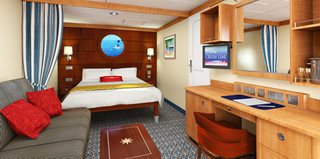
Category: 11C

Category: 11B

Category: 11A

Category: 10A

Category: IGT
This category can be booked for a special rate, guaranteed to you. Please note that the category is not associated at the time of booking with a specific stateroom, deck, bedding configuration or other particular settings. The assignment of an actual cabin will be performed during your check-in. The cabin can be anywhere on the ship.
Enjoy a view of the ocean in this stunning stateroom. Well-designed interiors provide ample living space and a split bath.
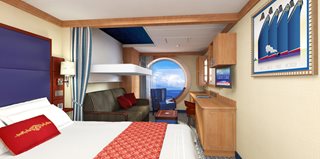
Category: 09D

Category: 09C

Category: 09B

Category: 09A

Category: 08C

Category: 08B

Category: 08A

Category: OGT
This category can be booked for a special rate, guaranteed to you. Please note that the category is not associated at the time of booking with a specific stateroom, deck, bedding configuration or other particular settings. The assignment of an actual cabin will be performed during your check-in. The cabin can be anywhere on the ship.
Tasteful décor, an expansive view, plush bedding and a private balcony make this stateroom your home-away-from-home.
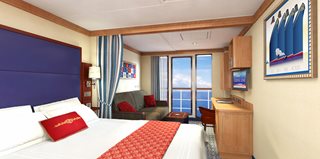
Category: 07A

Category: 06B

Category: 06A

Category: 05C

Category: 05B

Category: 05A

Category: 04E

Category: 04C

Category: 04B

Category: 04A

Category: VGT
This category can be booked for a special rate, guaranteed to you. Please note that the category is not associated at the time of booking with a specific stateroom, deck, bedding configuration or other particular settings. The assignment of an actual cabin will be performed during your check-in. The cabin can be anywhere on the ship.
Opulent suites feature a tasteful design, upgraded amenities, a private balcony, a whirlpool tub, a rain shower and a vanity mirror with a built-in TV.
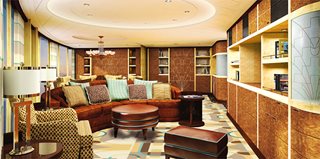
Category: 01A

Category: 02A

Category: 02B

Category: 03A
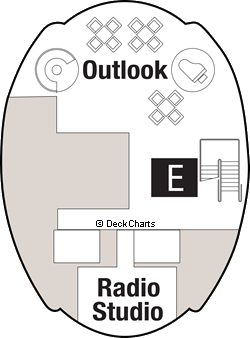
| Symbol | Description |
|---|---|
 | Elevator |
 | Accessible staterooms |
 | Connecting staterooms |
 | Solid white wall verandah |
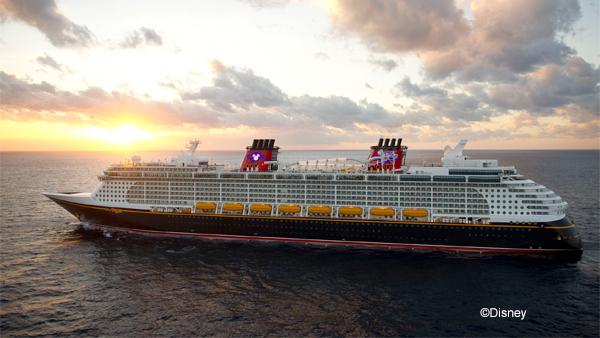
- Ship Name: Disney Dream
- Year Built: 2011
- Year Refurbished: 2015
- Year Entered Present Fleet: 2011
- Ship Class: Dream
- Maximum Capacity: 4,000
- Number of Passenger Decks: 14
- Number of Crew: 1,458
- Officers' Nationality: International
- Ocean-View without Balcony: 199
- Ocean-View with Balcony: 901
- Total Inside Staterooms: 150
- Tonnage (GRT): 130,000
- Capacity Based on Double Occupancy: 2,500
- Country of Registry: The Bahamas
- Total Staterooms: 1,250
- Suites with Balcony: 21
- Crew/Hotel Staff Nationality: International
Costco Member Reviews

Available Dates & Prices
Terms & Conditions
*Price shown is per person based on double occupancy and is valid for select stateroom categories only. Click on Terms & Conditions link below for details.
†This cruise includes a Digital Costco Shop Card that will arrive by email approximately 10 days after the start of your cruise. The exact amount of the Digital Costco Shop Card will be calculated during the booking process. The Digital Costco Shop Card promotion is nontransferable and may not be combined with any other promotion. To receive your Digital Costco Shop Card, bookings must be made directly through Costco Travel. Bookings made through Disney Cruise Line or the Disney onboard cruise consultant must be transferred to Costco Travel's reservation system to qualify for the Digital Costco Shop Card. Click on the Terms & Conditions link below for additional information.
Ship Registry: The Bahamas
As to Disney's artwork, properties and logos: ©Disney
Digital Costco Shop Card
This booking includes a Digital Costco Shop Card which will arrive by email one to two weeks after you return from your vacation. The Digital Costco Shop Card is a convenient payment option in our warehouses and on Costco.ca.













